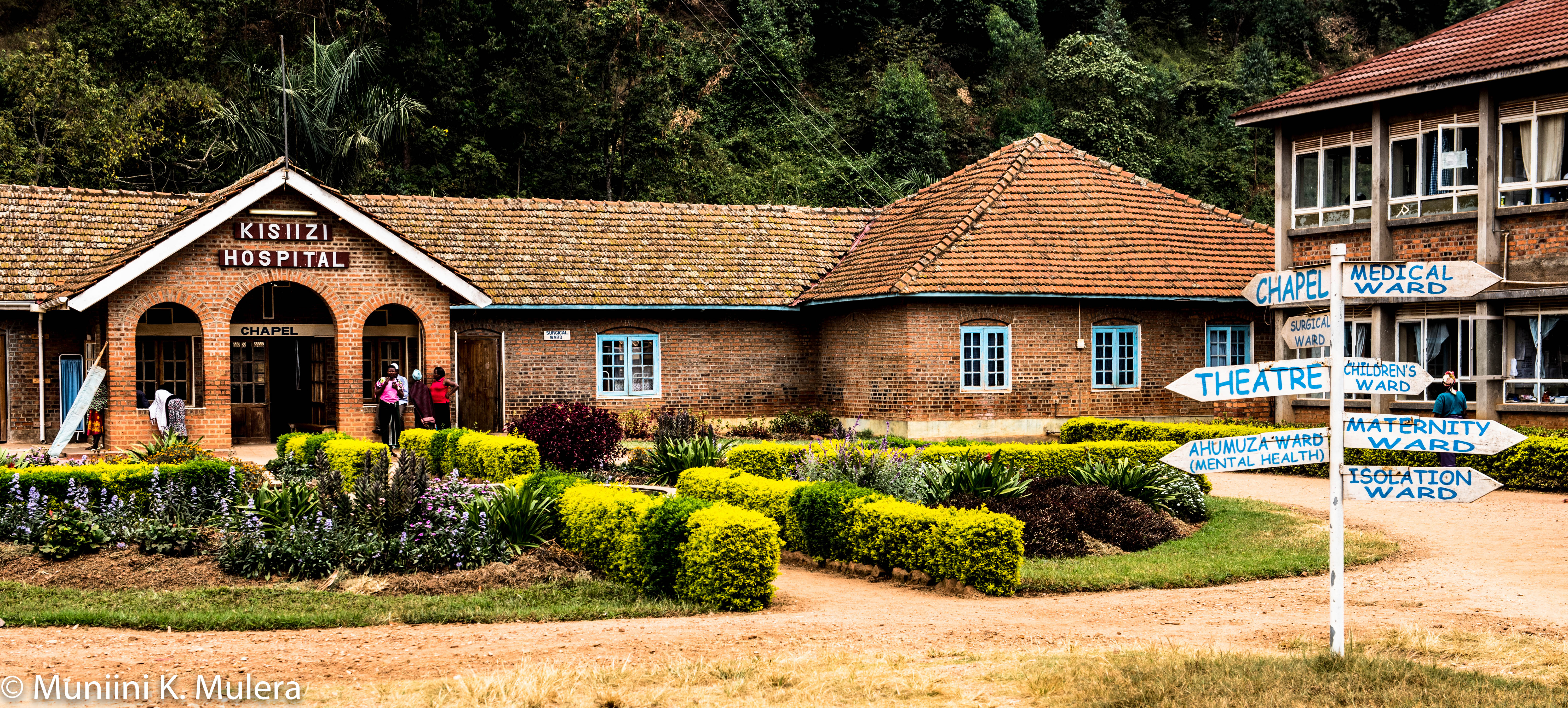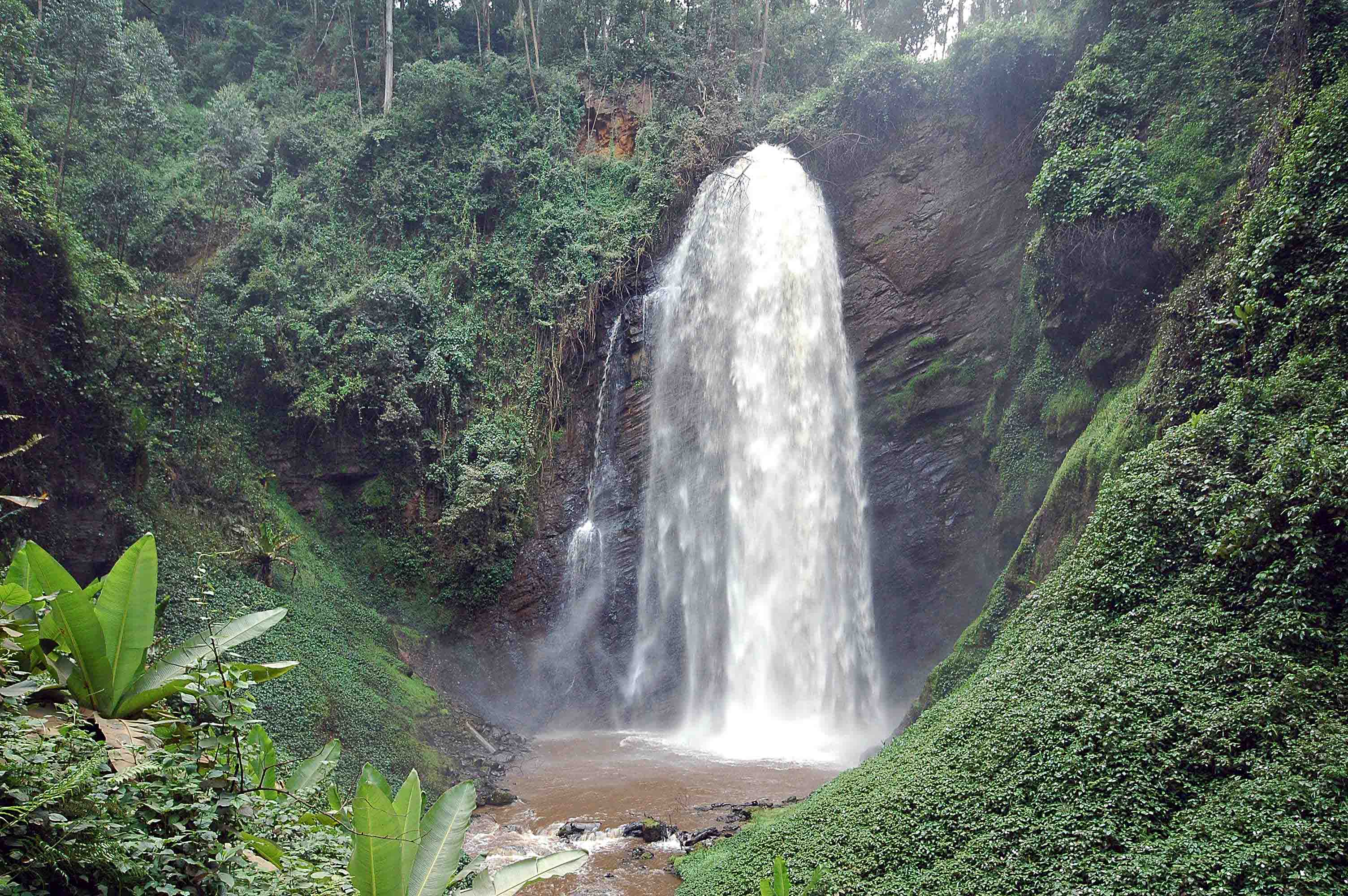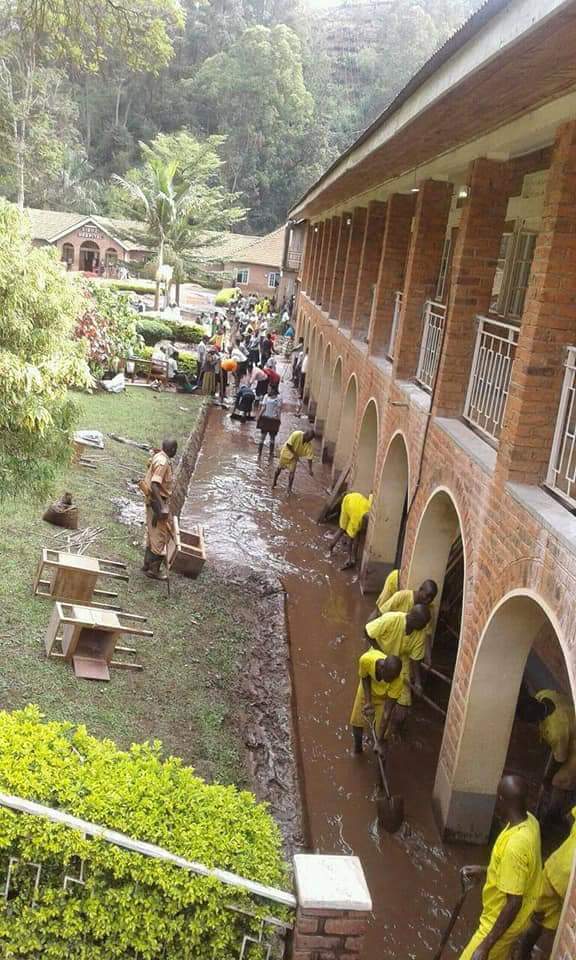
Mparo farms after the floods - Photo by Ezra Sebahire, Sept. 17, 2017
In recent days, the springs of the great deep have burst forth, and the floodgates of the heavens have been opened all over Uganda. Landslides and floods have exacted painful disruption on hundreds of thousands, displaced by torrents of muddy water that have turned their homesteads and farms into lakes and deathtraps.
Acholi, Bugisu, Bukedi, Teso, Lango, West Nile and Kigyezi have been particularly hit hard, with more trouble expected for at least the next two months.
My home area of Mparo, Rukiga, severely flooded nearly two weeks ago, had an even more destructive encore this past weekend.
None of this is surprising. The explanation, as I have repeatedly stated, is straight forward. Human greed and folly have conspired to destroy an environment’s inbuilt mechanisms for sustaining safe habitation of Mother Earth.
With most of the public swamps privatized, drained and turned into farms, natural drainage water systems were blocked. Add to this heavily silted and narrowed rivers, the perfect conditions were set up for the devastating flooding that seems to shock some people when it happens.
Then, of course, the once verdant mountainsides became the African address of Modest Mussorgsky’s great tone poem, Night on Bald Mountain. The tired and bare hillsides became the perfect accelerators for torrents cascading towards the valleys. Weakened and unprotected hillside soils were easily brought down as landslides.

Before the floods (Photo by Muniini K. Mulera, August 2015)
We saw an awful example of this, with fatal consequences, ten days ago when a downpour sent torrents of muddy water rushing down the hills of Nyakishenyi and Nyarushanje, forming rivers that discharged into the Kisiizi valley, turning Kisiizi Hospital into a lake.

After the floods - (From Kisiizi Hospital website)
The children’s inpatient unit and two other patient units were severely flooded, necessitating patient evacuation. Staff residencies were cut off from the main patient care areas. The hospital’s electric power generator was severely damaged, causing a blackout and failure of critical patient care support systems. Two prematurely born babies and an 8-year old child died as a result.
The injury to Kisiizi Hospital has caused great distress to me and to very many others because of its special place in the lives of the people of Kigyezi and the neighboring communities in Nkore.
Founded by Dr. Leonard Sharp in 1958, with his son John serving as the first doctor there, the hospital occupies a site with a very dark history.
First, the Omukinyata waterfalls at Kisiizi was a place of execution for girls who became pregnant before marriage. The victim would be pushed over eibanga (cliff) by her brother and father, as punishment for her sin. (The real reason for the murder was that a pregnant unmarried girl would not fetch a bride price, thus denying her brother the means for him to purchase his own wife.)

Kisiizi waterfall: Dark history of murders (Photo by Muniini K. Mulera, December 2006)
While the number of girls who perished at the falls is archived in the silent memory of our undocumented history, it was not until the early decades of the twentieth century that the murders came to a dramatic end.
Legend has it that a pregnant girl, pushed over the falls by her brother and father, held onto them, taking them with her to a shared death. The event persuaded the Bakiga elders that the murders were not a good idea after all.
Second, Kisiizi valley was chosen by the British as a site for a flax processing factory in 1944, built to produce linen cords for parachutes used in the Second World War. Italian prisoners of war that had been captured in Abyssinia were brought to Kisiizi to provide labour.
The factory did not last long, the flax plant having been destroyed by a disease called pasmo, caused by a fungus with the lovely name Septoria linicola. Dr. Sharp persuaded the colonial government to let him put the abandoned factory to good use.
And so a notorious place for killing pregnant girls became a celebrated center for healing and caring for pregnant women, whether married or not.
Factory buildings designed to support the bloodshed of war became a highly-regarded hospital that has saved numerous lives. One of Kisiizi’s famous ex-patients was a young boy called Yoweri Museveni mwene Kaguta.
With Christ as its strong foundation, Kisiizi Hospital, owned by the Church of Uganda, became a shining light in what had been a valley of death. Today, it is a 285-bed teaching hospital with annual visits of over 55,000 patients to its clinics; more than 9,000 admissions over 58,000 patient days; 3, 241 surgical operations; and 2,245 deliveries. Kisiizi has a successful community-based, not-for-profit health insurance scheme, the first of its kind in Uganda, with over 38,000 subscribing members.
These and other excellent services have now been severely disrupted by the flooding, putting very severe stress on the hospital’s resources.
However, just as Kisiizi’s dark history offered an opportunity for positive transformation nearly 60 years ago, the floods have awakened us to an opportunity to support this great and very well managed institution.

Recovery begins (from Kisiizi Hospital website)
The International Community of Banyakigyezi (ICOB) is going to launch an Internet-based fundraising campaign in the next few days, to supplement the emergency support that Kisiizi has already received from the Uganda Government, and from other well-wishers.
Meanwhile, the ugliness of death and disruption at Kisiizi should compel Ugandans to take urgent steps to restore the environment, complete with restoration of swamps, other wetlands and hillsides to their natural state.
Further reading: Kisiizi Hospital Online